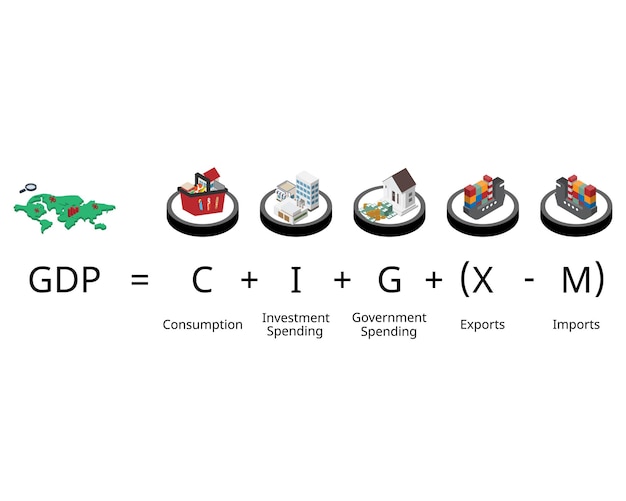Unlock Your Financial Future: The Power of Compound Interest

The Power of Compound Interest: How to Grow Your Wealth Over Time is a powerful concept where your earnings generate further earnings, leading to exponential growth of your investments over the long term.
Unlocking financial growth doesn’t always require complex strategies. Understanding and harnessing the power of compound interest: how to grow your wealth over time can be a game-changer for your financial future.
Understanding the Basics of Compound Interest
Compound interest is often referred to as the eighth wonder of the world, and for good reason. It’s a simple yet powerful concept that can significantly boost your wealth over time.
At its core, compound interest is earning interest on your initial investment (the principal) as well as on the accumulated interest from previous periods. This snowball effect can accelerate wealth accumulation far beyond simple interest.
The Formula for Compound Interest
The magic of compound interest can be quantified using a formula. While it might seem intimidating at first, understanding the basics can help you appreciate how your money grows.
The compound interest formula is commonly expressed as:
A = P (1 + r/n)^(nt)
- A = the future value of the investment/loan, including interest
- P = the principal investment amount (the initial deposit or loan amount)
- r = the annual interest rate (as a decimal)
- n = the number of times that interest is compounded per year
- t = the number of years the money is invested or borrowed for
This formula illustrates how the frequency of compounding (n) and the length of the investment period (t) can significantly impact the final amount (A).
In essence, compound interest is the process of earning “interest on interest.” Each time interest is calculated, it’s added to the principal. The next interest calculation then includes this new, larger principal.

The Impact of Time on Compounding
One of the most significant factors influencing the power of compound interest is time. The longer your money remains invested and compounding, the more substantial the returns become.
Starting early and staying consistent are key to maximizing the benefits of compounding over the long run. Consider these points:
Starting Early
The earlier you begin investing, the more time your money has to grow. Even small amounts invested early can accumulate significantly over several decades.
Consistency is Key
Regular contributions to your investment accounts enhance the compounding effect. Each additional deposit becomes a part of the principal, leading to more interest earned.
- Time is your greatest ally in compounding.
- Small, consistent investments over long periods can yield remarkable returns.
- Don’t underestimate the power of starting early, even with modest amounts.
The long-term perspective is critical for leveraging the full potential of compound interest. It’s a strategy that requires patience and discipline, but the rewards can be substantial.
Different Compounding Frequencies
The frequency at which interest is compounded also plays a crucial role in maximizing returns. More frequent compounding leads to faster growth of your investment.
Different financial institutions and investment products offer varying compounding frequencies. Understanding these options can help you make informed decisions about where to invest your money.
Annual Compounding
Interest is calculated and added to the principal once per year. This is the least frequent type of compounding.
Semi-Annual Compounding
Interest is calculated and added to the principal twice per year. This provides a slight advantage over annual compounding.
Quarterly Compounding
Interest is calculated and added to the principal four times per year. This offers more frequent compounding than semi-annual.
Monthly Compounding
Interest is calculated and added to the principal every month. This results in even faster growth compared to quarterly compounding.

Factors Influencing Compound Interest Growth
Several factors can influence the growth of wealth through compound interest. Understanding these factors can help you make strategic decisions to optimize your investment outcomes.
Here are some main factors:
Interest Rate
A higher interest rate leads to faster compounding, allowing your money to grow more quickly. Even small differences in interest rates can have a significant impact over the long term.
Principal Amount
The larger the initial investment or principal, the more interest you will earn. Starting with a higher principal gives you a head start in wealth accumulation.
Regular Contributions
Making regular contributions to your investment accounts significantly boosts the compounding effect. Each additional deposit becomes part of the principal, leading to increased interest earnings.
- Maximize your returns by seeking higher interest rates whenever possible.
- Start with the largest principal amount you can comfortably afford.
- Make regular contributions to consistently grow your investment base.
Optimizing these factors can amplify the power of compound interest and accelerate your wealth-building journey.
Practical Applications of Compound Interest
Compound interest is not just a theoretical concept; it has numerous practical applications in personal finance. Leveraging these applications can significantly improve your financial well-being.
Here’s how you can apply compound interest principles in your financial life:
Retirement Savings
Compound interest is crucial for retirement savings. Contributing to retirement accounts like 401(k)s or IRAs allows your money to grow tax-deferred or tax-free, benefiting from years of compounding.
Investing in Stocks and Bonds
Investing in stocks and bonds can provide opportunities for compound growth through dividends and capital appreciation. Reinvesting dividends can further enhance your returns over time.
Savings Accounts
While savings accounts typically offer lower interest rates, they can still benefit from compound interest. Choosing high-yield savings accounts can help maximize your returns.
Debt Management
Understanding compound interest can also help you manage debt effectively. Paying off high-interest debts, such as credit card balances, as quickly as possible can save you significant amounts of money over time.
Avoiding Common Pitfalls in the Context of Compound Interest
While compound interest is a powerful tool, it’s essential to avoid common pitfalls that can hinder your progress. Taking proactive steps to mitigate these challenges can ensure you stay on track toward your financial goals.
Be aware of the negative compounding which is when you are in debt and paying interest on interest of the debt.
High-Interest Debt
Carrying high-interest debt, such as credit card balances, can counteract the benefits of compound interest. The interest you pay on debt can quickly erode your wealth.
Inflation
Inflation can reduce the purchasing power of your investment returns. It’s crucial to invest in assets that outpace inflation to maintain real growth.
Investment Fees
High investment fees can eat into your returns over time. Choose low-cost investment options, such as index funds or ETFs, to minimize expenses.
- Prioritize paying off high-interest debt to avoid negative compounding.
- Invest in assets that outpace inflation to maintain your purchasing power.
- Minimize investment fees to maximize your returns over the long term.
Being diligent about these aspects can safeguard your investments and enhance the power of compound interest.
| Key Factor | Brief Description |
|---|---|
| ⏱️ Time | Longer investment horizons allow for greater compounding. |
| 💰 Principal | Higher initial investments yield more significant returns. |
| 📈 Interest Rate | Higher rates exponentially increase compounded earnings. |
| 🔄 Frequency | More frequent compounding (e.g., monthly) generates faster growth than less frequent (e.g., annually). |
Frequently Asked Questions
▼
Compound interest is earning “interest on interest.” It occurs when interest earned is added to the principal, and future interest is calculated on the new, larger amount. This process leads to exponential growth over time.
▼
Simple interest is calculated only on the principal amount, while compound interest is calculated on the principal plus accumulated interest. Compound interest results in significantly higher returns over longer periods.
▼
Time is a critical factor. The longer the investment horizon, the greater the opportunity for compounding to generate substantial returns. Starting early allows even small amounts to grow significantly.
▼
Yes, especially regarding debt. High-interest debt, such as credit card balances, compounds against you, quickly increasing the amount you owe if not managed properly. Manage debt for a healthier wallet.
▼
Start investing early, make regular contributions, reinvest dividends, and avoid high-interest debt. These strategies will maximize the benefits of compound interest and accelerate your wealth-building strategies.
Conclusion
Understanding and harnessing the power of compound interest is essential for long-term financial success. By starting early, investing consistently, and making informed decisions, you can unlock the full potential of compounding and build a secure financial future.





